
Ingush
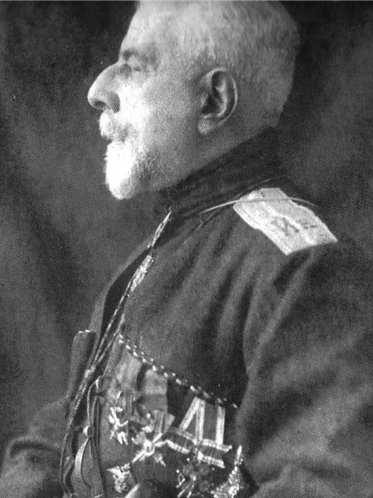
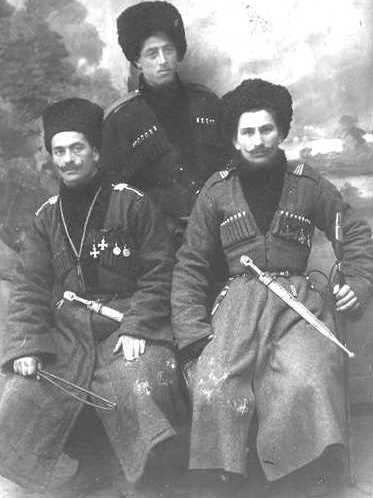
Ingush troopers, left, and their Shtabs-Rotmistr (Captain), right.
The Ingush are a large tribe from what is now Ingushetia, closely related to the Chechens. Both groups have a warlike tradition and share a strong attachment to Islam. Their relationships with Russians are fraught: the Tsars finally conquered them in 1864, after a prolonged struggle, and Stalin tried to forcibly migrate them from the Caucasus. Currently the area is again strife-ridden, for many of the same old historical reasons.
1st and 2nd Ingush Horse Regiments
The Imperial Army formed an Ingush Regiment in the Savage Division, and we have assumed that the RCW units kept this basic uniform (admittedly without any great evidence).
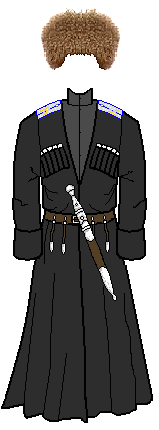 |
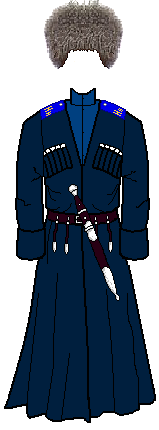 |
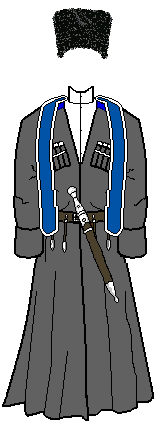 |
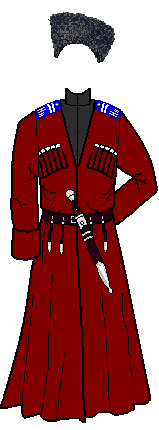 |
| Officer: Ingush Horse Regiment | Trooper: Ingush Horse Regiment | Trooper with bashlyk | Junior NCO in field dress |
The Ingush were not particularly rich, so their outfits were probably quite plain.
Uniform Details
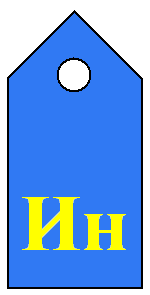 |
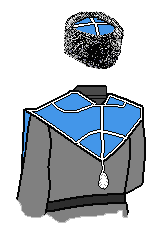 |
|
|---|---|---|
| Shoulderboard: Ingush private | Dress bashlyk and officer's hat, light blue with white piping |
Shoulderboards were light blue with a monogram of Ин (i.e. In). The bashlyk was the same colour, so we assume the hat tops must have been as well. Officer lace was silver, so cipher and rank markings were gold. Khaki shoulderboards were marked in light blue.
NB: we have deviated from page 46 of the WWI Osprey where is says the shoulderboards for the Ingush were red as the plate G3 shows an Ingush with light blue facings. The other tribes from the Terek seem to have been given blue (Karbadians, Chechens) while the tribes from the Kuban were given red (Circassians, Tatars). However there is some contradictory evidence, such as flag colours, which suggest the Ingush were in red.
History in the RCW (and Beyond)
The Savage Division of WWI contained an Ingush Regiment, but it appears to have dissolved and returned home in early 1918.
During the first stages of the Civil War Ingushetia was the scene of particularly heavy fighting as the mountaineers fought the Terek Cossacks, destroying several stanitsas. They alternated between working with and opposing the local Soviets, but they had no love of Communism. The Volunteer Army then conquered the area, after several battles with the Ingush, but trouble flared several times as the Ingush and Chechens were never properly pacified.
Despite this a few Ingush turned out in the White Army. They formed a brigade of the AFSR's Combined Horse Mountain Division in September 1919. It wasn't very large, since the Volunteer Army was considered an enemy by most Ingush. We have numbers for October 1919:
2nd Ingush Horse Regiment – 61 sabres, 3 MGs
These units would have broken up in mid-1920.
There was a major uprising of Chechens and Ingush in 1926 against the Soviets.
Similar Units
Amusingly, the light blue scheme is basically identical to the Terek Cossacks, their fierce enemy.
Flags
The WWI Ingush Regiment had had been awarded a Nikolai (in the non-Christian variant without the slogan and the icon) but it was never delivered.
The modern flag of Ingushetia is this:
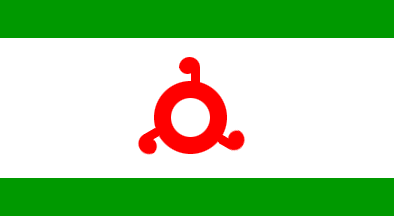
The theme of green stripes on white seems to have been popular at the time in the area.
The independence minded opponents of the Whites and Reds would have flown Islamic flags, probably including that of the Emirate of the North Caucasus.
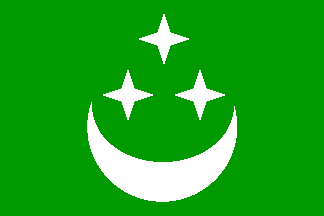
Sources
For the history of Ingushetia in the RCW:
Revolution and Civil War in the North Caucasus – End of the 19th-Beginning of the 20th Century, by Vassan-Giray Jabagi in Central Asian Survey Vol 10, 1991. The author is an Ingush, and the article concentrates on the Ingush from 1918 to 1920.
Photos
We have collected various period photos of mountaineers on a separate page.